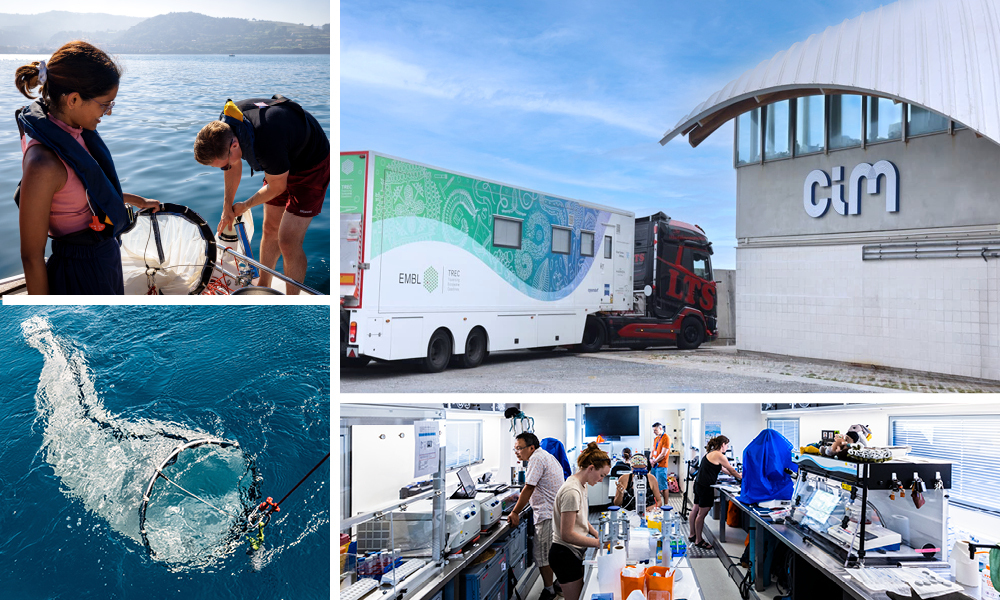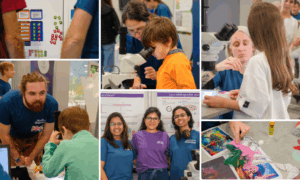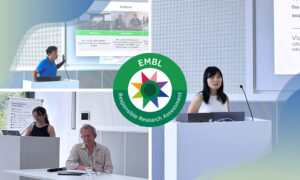CIM and EMBL join forces to study how to curb red tides and anticipate the effects of marine heatwaves
Around 40 researchers will participate in this joint initiative, which will take place at the Toralla Marine Science Station in Vigo, Spain

Joint press release with the Marine Research Centre at the University of Vigo
The CELLBLOOM project, driven by the Biological Oceanography Group of the Marine Research Centre (CIM) at the University of Vigo, Spain, and the European Molecular Biology Laboratory (EMBL), headquartered in Germany, aims to understand how the ocean responds to two increasingly frequent and concerning phenomena: toxic microalgae blooms – known as red tides – and marine heatwaves.
Around 40 researchers from CIM and EMBL will participate in this joint initiative, which will take place at the Toralla Marine Science Station (ECIMAT) and features the arrival of an advanced mobile laboratory equipped with cutting-edge microscopy technology.
This initiative is supported by the Horizon Europe IMAGINE project, which promotes the development of state-of-the-art imaging technologies in microscopy to bridge the gap between molecular biology and functional biology, as well as by EMBL as part of its Planetary Biology transversal theme. The project represents a high-level scientific collaboration that combines expertise, advanced technologies, and EMBL’s Advanced Mobile Laboratory (AML), which arrived today in Vigo to work side by side with the CIM team, an exemplary case of European scientific cooperation.
Two experiments, one common goal: to better understand global changes in the ocean
Throughout July, two parallel experiments will be conducted at the Toralla Marine Science Station (ECIMAT), CIM’s main research facility, as part of CELLBLOOM. These experiments will advance scientific understanding of current global changes in the ocean, with a clear, collaborative, and European approach.
The first experiment will investigate whether compounds released by the seagrass Zostera marina can help inhibit the growth of toxic microalgae responsible for red tides under natural conditions. The second will simulate a marine heatwave to assess the impact of temperature increases on microbial plankton with particular attention to key phytoplankton species present in the waters of the Ría de Vigo.
Use of unique infrastructures in Europe
One of the most innovative aspects of this collaboration is the involvement of EMBL’s Advanced Mobile Laboratory – a scientifically equipped truck outfitted with cutting-edge technology – which has arrived in Vigo to allow for on-site analysis of samples taken from the estuary. This unique infrastructure is designed to bring molecular and cellular research directly into the field. It features, amongst others, technology to preserve organisms for high-resolution electron microscopy and advanced analysis systems that enable detailed observation of how microorganisms respond to various stimuli.
Moreover, the experiments will take place in ECIMAT’s mesocosm facility, a unique European-level installation that allows researchers to simulate natural conditions in a controlled environment. This is crucial for accurately assessing the effects of climate change and red tides on the marine ecosystem.
Collaborative science with local impact
Nearly 40 researchers will take part in this initiative, including personnel from EMBL and CIM, as well as scientists from the Biology Centre of the Czech Academy of Sciences, the French Centre National de la Recherche Scientifique (CNRS), and the University of Minho, Portugal. In addition to advancing scientific knowledge, the project will offer a rich experience in exchanging ideas, methods, and technologies among leading European institutions.
This type of research has a direct social impact: red tides affect food security, public health, and the shellfishing industry, while heatwaves alter the structure and functioning of marine ecosystems. These experiments therefore address questions at the heart of today’s environmental and economic debates.
As Emilio Fernández, head of the initiative at CIM and Principal Investigator of the Biological Oceanography Group, explained, “These experiments are an example of how the convergence of very different methodological approaches aimed at the same goal will enable progress in understanding these environmental challenges – progress that none of the participating teams could have achieved even in their boldest dreams.”
For his part, Niko Leisch, EMBL’s Head of the Mobile Laboratory Services, highlighted: “The CELLBLOOM project is a unique opportunity for all of us involved. We combine the fascinating biology of the blooms that naturally occur in the Ria de Vigo, with the highly controlled conditions that ECIMAT provides and the advanced technologies EMBL brings along, so that we can then study the organisms, their reaction to changing conditions, their interactions, and their behaviour in minute detail.”
The experimental campaign will include an official media visit, where further details will be shared about the experiments and the scientific collaboration involved.
A project to strengthen European scientific competitiveness
The CELLBLOOM project is partly financed by the IMAGINE project, which brings together 22 partners from various European countries, including research centres, universities, and companies. Its goal is to strengthen Europe’s scientific competitiveness in structural biology, biological imaging, and marine biology through the development of new imaging technologies, commercial products, and even spin-offs. It also promotes the integration of services, researcher training, and collaboration with industry, fostering a model of open science and innovation.
In addition, the CELLBLOOM project is also part of EMBL’s activities under its Planetary Biology transversal theme, which promotes multidisciplinary initiatives that help us understand molecularly and mechanistically how organisms, populations and communities respond to their biotic and abiotic environment.
CIM participates in IMAGINE through its role within the European research infrastructure EMBRC-ERIC, acting as a reference centre for real-world testing of technologies developed within the project. This collaboration positions CIM as a key player in the advancement of marine biology in Europe.



